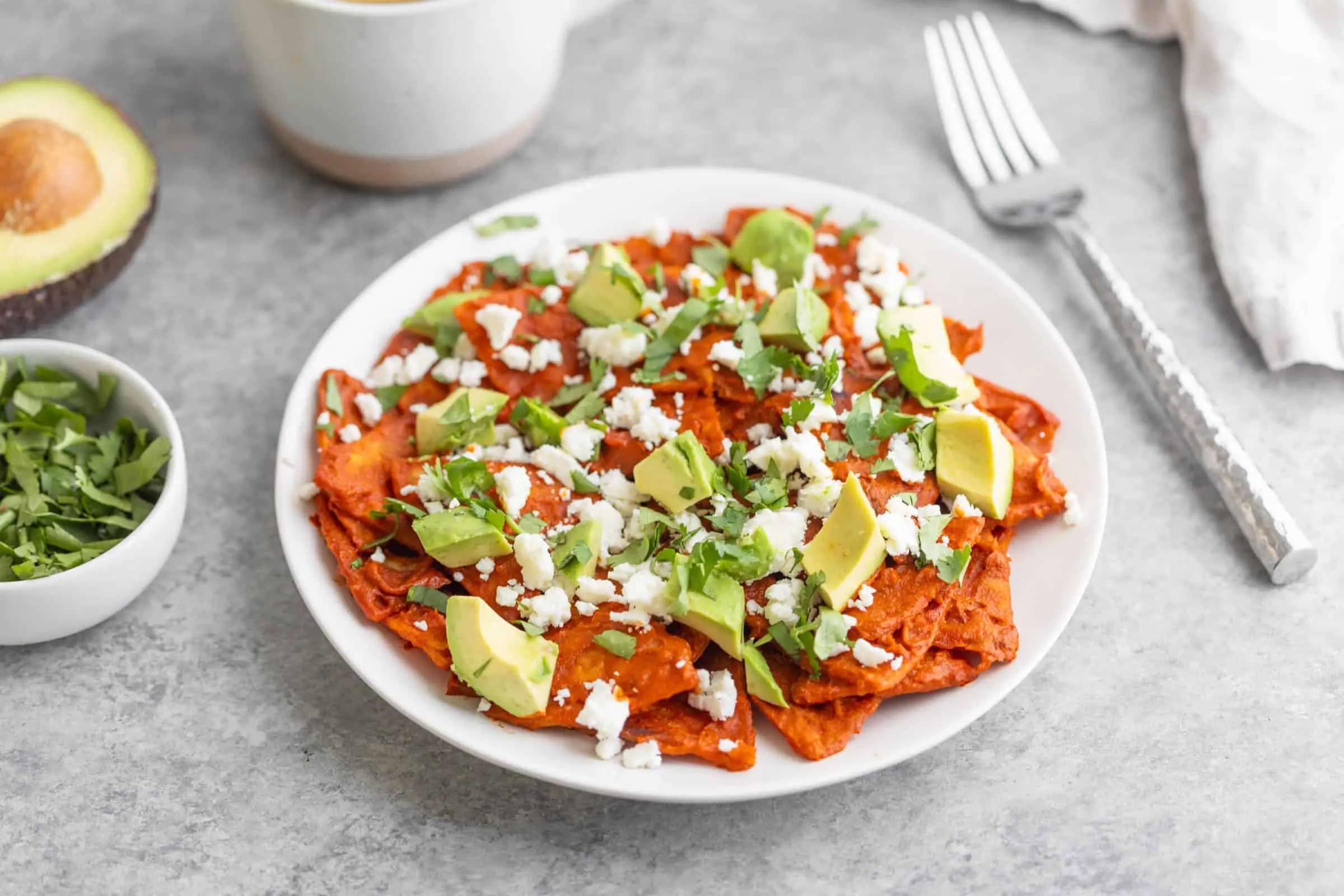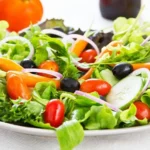
Chilaquiles is a traditional Mexican dish that consists of fried corn tortilla pieces simmered in a flavorful sauce. It is often topped with ingredients such as cheese, sour cream, onions, and avocado. Chilaquiles can be enjoyed for breakfast or as a hearty meal any time of the day.
Chilaquiles have a rich history that dates back to ancient Aztec cuisine, making them a staple in traditional Mexican food culture for over centuries. The dish’s roots can be traced back to the indigenous peoples of Mexico, showcasing a culinary tradition that has stood the test of time. From its humble beginnings to its modern-day popularity, chilaquiles have evolved while still retaining their authentic flavors and preparation methods.
The etymology of the word “chilaquiles” is rooted in the Nahuatl language, with “chīl” representing chili and “āquilitl” signifying greens. This linguistic connection highlights the dish’s indigenous origins and the importance of chili peppers in Mexican cuisine. The name itself reflects the key ingredients that give chilaquiles their signature spicy and flavorful profile, showcasing the cultural significance embedded in the dish’s very name.
Chilaquiles are a delightful combination of fried tortilla strips soaked in a savory sauce, typically salsa or mole, creating a harmonious blend of textures and flavors. The process of frying the tortillas to a crispy perfection before simmering them in the sauce allows for a unique contrast between the crunchy tortilla strips and the rich, flavorful sauce. This method of preparation results in a dish that is both comforting and satisfying, appealing to a wide range of palates.
In Mexican culinary tradition, chilaquiles are often enjoyed as a hearty breakfast or brunch dish, providing a flavorful and filling start to the day. The incorporation of eggs or shredded chicken into the chilaquiles adds a protein-rich element to the meal, making it a well-rounded and satisfying option for the morning meal. This breakfast tradition reflects the cultural significance of chilaquiles as a beloved dish that brings people together to share a delicious and nourishing start to their day.
Across the diverse regions of Mexico, chilaquiles are prepared in various ways, each showcasing a unique twist on the classic dish. From the vibrant salsas of central Mexico to the complex moles of Oaxaca, the regional variations of chilaquiles highlight the culinary diversity of the country. These regional differences in preparation and flavor profiles contribute to the dynamic nature of chilaquiles, demonstrating the creativity and ingenuity of Mexican cuisine.
The versatility of chilaquiles is evident in the different variations of the dish, such as red chilaquiles made with a spicy red salsa or green chilaquiles featuring a tangy green salsa. The concept of chilaquiles divorciados, which combines both red and green salsas, showcases the playful and inventive nature of Mexican cuisine. These variations allow for a range of flavor experiences, catering to individual preferences and adding an element of excitement to the dining experience.
Chilaquiles offer a practical solution for utilizing leftover tortillas, as they are transformed into crispy, golden strips that serve as the base of the dish. This resourceful approach to cooking aligns with the principles of sustainability and waste reduction, turning stale tortillas into a delicious and satisfying meal. By repurposing ingredients that might otherwise go to waste, chilaquiles exemplify the creativity and resourcefulness ingrained in traditional Mexican cooking practices.
The garnishes commonly used in chilaquiles, such as cilantro, onion, and radish slices, enhance the dish’s flavors and textures, adding brightness and freshness to each bite. These traditional garnishes not only contribute to the visual appeal of the dish but also provide a balance of flavors that elevate the overall dining experience. The combination of fresh ingredients with the hearty components of the chilaquiles creates a harmonious blend of tastes that is both comforting and satisfying.
The spiciness of chilaquiles can vary depending on the type of chili used in the sauce, with some variations offering a mild heat while others pack a fiery punch. The choice of chili peppers in the sauce plays a significant role in determining the overall flavor profile of the dish, adding depth and complexity to each bite. Whether one prefers a subtle warmth or a bold kick of spice, the customizable nature of chilaquiles allows for a personalized dining experience tailored to individual spice preferences.
In Mexican culture, chilaquiles hold a special place as a comfort food that is enjoyed during celebrations and family gatherings, fostering a sense of connection and nostalgia. The dish’s association with communal meals and festive occasions speaks to its role in bringing people together to share in the joy of good food and good company. Whether served at a lively fiesta or a cozy family breakfast, chilaquiles evoke feelings of warmth and familiarity, making them a beloved culinary tradition that transcends generations.
Chilaquiles’ presence on the menus of numerous Mexican restaurants worldwide reflects their growing popularity and widespread appeal among food enthusiasts. The dish’s flavorful combination of crispy tortilla strips, savory sauce, and an array of toppings has captured the hearts and taste buds of diners around the globe, establishing chilaquiles as a beloved staple in Mexican cuisine.
The adaptability of chilaquiles allows for endless customization, making them a favorite among culinary enthusiasts who enjoy experimenting with different flavors and ingredients. From traditional recipes to modern interpretations, the versatility of chilaquiles offers a canvas for creativity in the kitchen, inspiring chefs and home cooks to put their unique spin on this classic dish.
Chilaquiles’ ability to cater to both vegetarians and meat-eaters alike highlights their inclusive nature and broad appeal across dietary preferences. Whether enjoyed as a vegetarian delight or with the addition of meat for extra protein, chilaquiles offer a versatile dining option that can be enjoyed by individuals with varying culinary tastes and preferences.
Some chefs and home cooks elevate the traditional chilaquiles recipe by incorporating innovative ingredients such as seafood, mushrooms, or different types of cheese. These creative adaptations add a gourmet touch to the dish, expanding its flavor profile and offering a unique culinary experience that pushes the boundaries of traditional Mexican cuisine.
The accompaniments often served alongside chilaquiles, such as Mexican rice or a light salad, complement the dish’s rich and hearty flavors, providing a well-rounded dining experience. The combination of chilaquiles with side dishes offers a balanced meal that satisfies both the palate and the appetite, showcasing the harmonious interplay of flavors and textures in Mexican cuisine.
The presentation of chilaquiles can range from simple and rustic to elegant and refined, with variations in plating styles that cater to different dining preferences. Whether served on a traditional plate or presented in a more contemporary fashion, the visual appeal of chilaquiles adds to the overall dining experience, inviting diners to appreciate the artistry and craftsmanship behind this classic dish.
The satisfying crunchiness of chilaquiles, achieved through the frying of tortilla strips to a crispy texture, enhances the sensory experience of the dish, providing a delightful contrast to the rich and flavorful sauce. The crispy tortilla strips retain their crunch even when soaked in the sauce, offering a textural complexity that adds depth and dimension to each bite of chilaquiles.
The addition of a fried egg on top of chilaquiles introduces a luxurious and indulgent element to the dish, creating a delightful combination of flavors and textures. The runny yolk of the fried egg adds a creamy richness that complements the crispy tortilla strips and savory sauce, elevating the dish to a new level of decadence and sophistication.
In Mexican culture, chilaquiles are revered as a popular hangover cure believed to help alleviate the effects of a night of revelry. The hearty and flavorful nature of chilaquiles is thought to provide comfort and nourishment to those seeking relief from the aftermath of a night of celebration, making them a go-to remedy for the morning after.
The practice of using chilaquiles as a creative solution for repurposing stale tortillas underscores the resourcefulness and ingenuity of Mexican culinary traditions. By transforming leftover tortillas into a delicious and satisfying dish, chilaquiles exemplify the ethos of sustainability and waste reduction, showcasing how simple ingredients can be elevated into a culinary masterpiece through thoughtful preparation and creativity.
The versatility of chilaquiles allows for them to be enjoyed at any time of day, catering to different dining preferences and schedules. Whether savored as a hearty breakfast, a satisfying brunch, a quick lunch, or a comforting dinner, chilaquiles offer a delicious and versatile meal option that can be enjoyed at various times throughout the day.
Chilaquiles’ presence in Mexican cookbooks and culinary shows highlights their enduring popularity and cultural significance within the realm of Mexican cuisine. The dish’s inclusion in culinary publications and media platforms showcases its versatility and appeal, inspiring both seasoned chefs and home cooks to explore the rich flavors and textures of chilaquiles in their own kitchens.
The diverse preparations of chilaquiles found in different households reflect the individual creativity and culinary traditions passed down through generations. Each cook imbues their unique touch and flavor preferences into their version of chilaquiles, resulting in a dish that is as diverse and varied as the families and regions from which they originate.
Chilaquiles’ status as a beloved dish in Mexican cuisine underscores their enduring popularity and cultural significance, with many individuals growing up enjoying them at family gatherings, restaurants, and street food stalls. The widespread appeal of chilaquiles transcends age, background, and culinary preferences, making them a cherished culinary tradition that resonates with people from all walks of life.
The global popularity of chilaquiles speaks to their universal appeal and ability to captivate food enthusiasts around the world. Whether enjoyed in Mexico, the United States, Europe, or beyond, chilaquiles have gained recognition for their bold flavors, comforting qualities, and rich cultural heritage, solidifying their status as a beloved dish that transcends borders and brings people together through the shared enjoyment of good food.
Chilaquiles FAQs: A Savory Mexican Delight
1. What are Chilaquiles?
Chilaquiles (pronounced chih-lah-KI-les) are a traditional Mexican breakfast or brunch dish made with corn tortillas that are cut into triangles or strips, fried or toasted, and then simmered in a spicy salsa verde (green salsa) or salsa roja (red salsa). The softened tortillas are then topped with a variety of delicious ingredients, creating a vibrant and flavorful combination.
2. What are the different variations of Chilaquiles?
The beauty of chilaquiles lies in their versatility. Here are some popular variations:
- Salsa verde vs. salsa roja: The salsa choice determines the overall flavor profile. Green salsa offers a tomatillo and green chile base, resulting in a tangy and bright flavor. Red salsa utilizes dried chiles like guajillo or pasilla, creating a richer and smokier taste.
- Topped with protein: Shredded chicken, carnitas (braised pork), barbacoa (shredded beef), or chorizo (spicy sausage) add a hearty protein element.
- Cheese galore: Queso fresco, crema (Mexican sour cream), or crumbled cotija cheese offer a creamy and salty counterpoint to the spicy salsa.
- Veggie delight: Chopped onions, cilantro, avocado slices, or even black beans can be incorporated for a more vibrant and textural experience.
- Fried vs. toasted tortillas: Frying creates a crispier texture, while toasting results in a lighter and healthier option.
- Baked chilaquiles: For a casserole-like presentation, chilaquiles can be baked with cheese melted on top.
3. What are some tips for making chilaquiles?
- Use slightly stale tortillas for better handling during the frying or toasting process.
- Don’t overcook the tortilla strips. They should be softened but still retain a slight crispness.
- Adjust the salsa’s spiciness to your preference. You can start with a milder salsa and gradually add more heat.
- Don’t skimp on the toppings! Experiment with different combinations to find your perfect flavor profile.
- Leftovers can be stored in the refrigerator and reheated for a quick and satisfying meal later.
4. What are some traditional accompaniments to chilaquiles?
- Fried eggs (sunny side up or scrambled) are a classic pairing, adding richness and protein.
- Refried beans provide a creamy and savory side dish.
- Sliced avocado adds a cool and healthy touch.
- A dollop of sour cream balances the spiciness.
- Pickled jalapenos or onions offer a tangy and refreshing counterpoint.
5. Where can I find chilaquiles?
Chilaquiles are a staple dish in Mexican restaurants. You can also find them on brunch menus at many non-Mexican restaurants that offer Tex-Mex or broader Latin American cuisine. If you’re feeling adventurous, try making them at home! It’s a relatively simple dish that allows for creative customization.
6. Are chilaquiles healthy?
Chilaquiles can be a healthy breakfast or brunch option, depending on the ingredients you choose. Opt for lean protein sources, low-fat cheese, and limit the amount of fried elements. You can also use whole-wheat tortillas for added fiber.
7. What’s the difference between chilaquiles and migas?
Migas, a Tex-Mex dish, shares similarities with chilaquiles. Both utilize tortillas and salsa, but migas typically involve scrambled eggs as a core ingredient and often incorporates other breakfast staples like chopped vegetables and cheese. Chilaquiles, on the other hand, focus on the salsa-soaked tortillas and offer more variety in terms of toppings.








